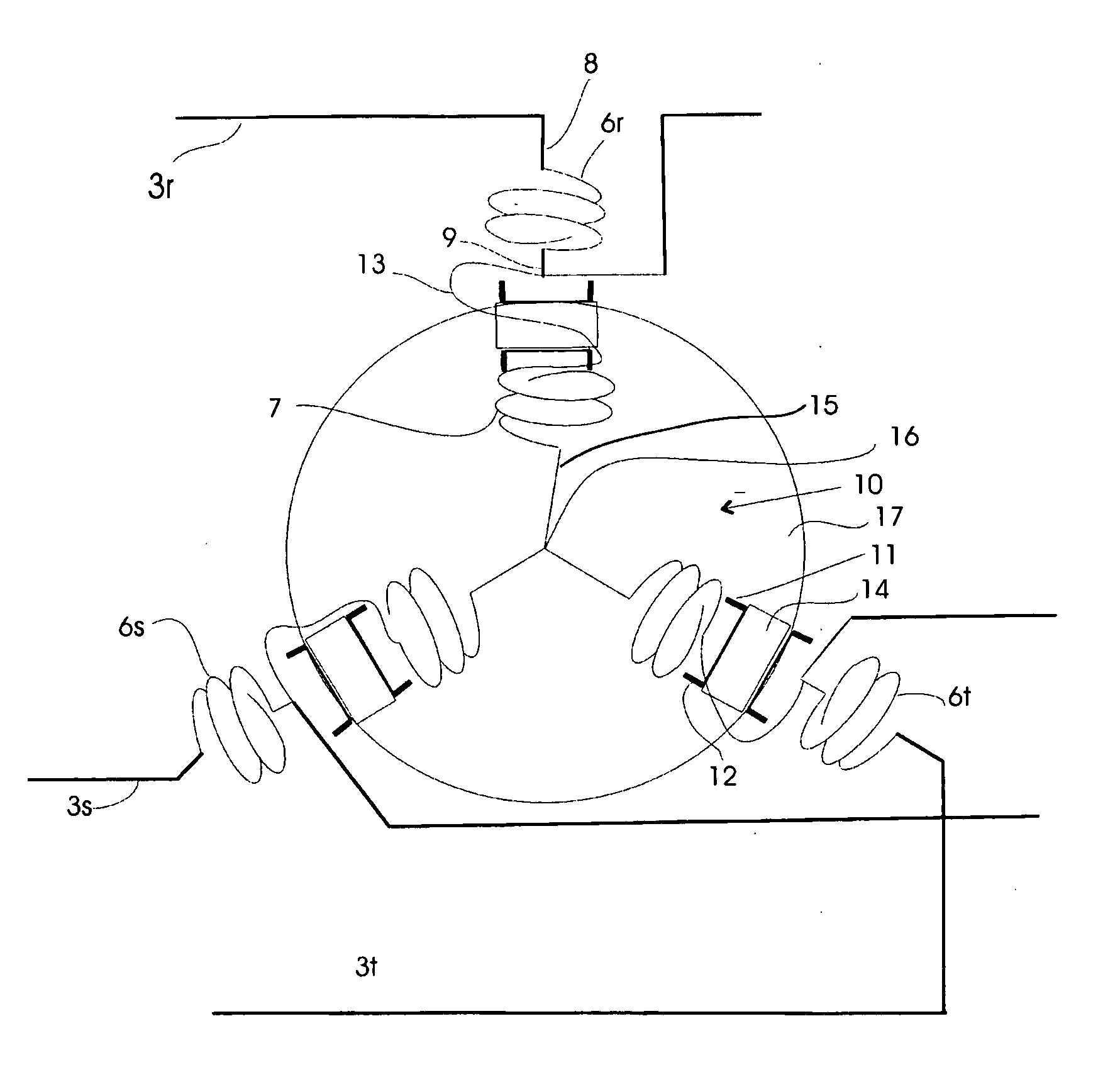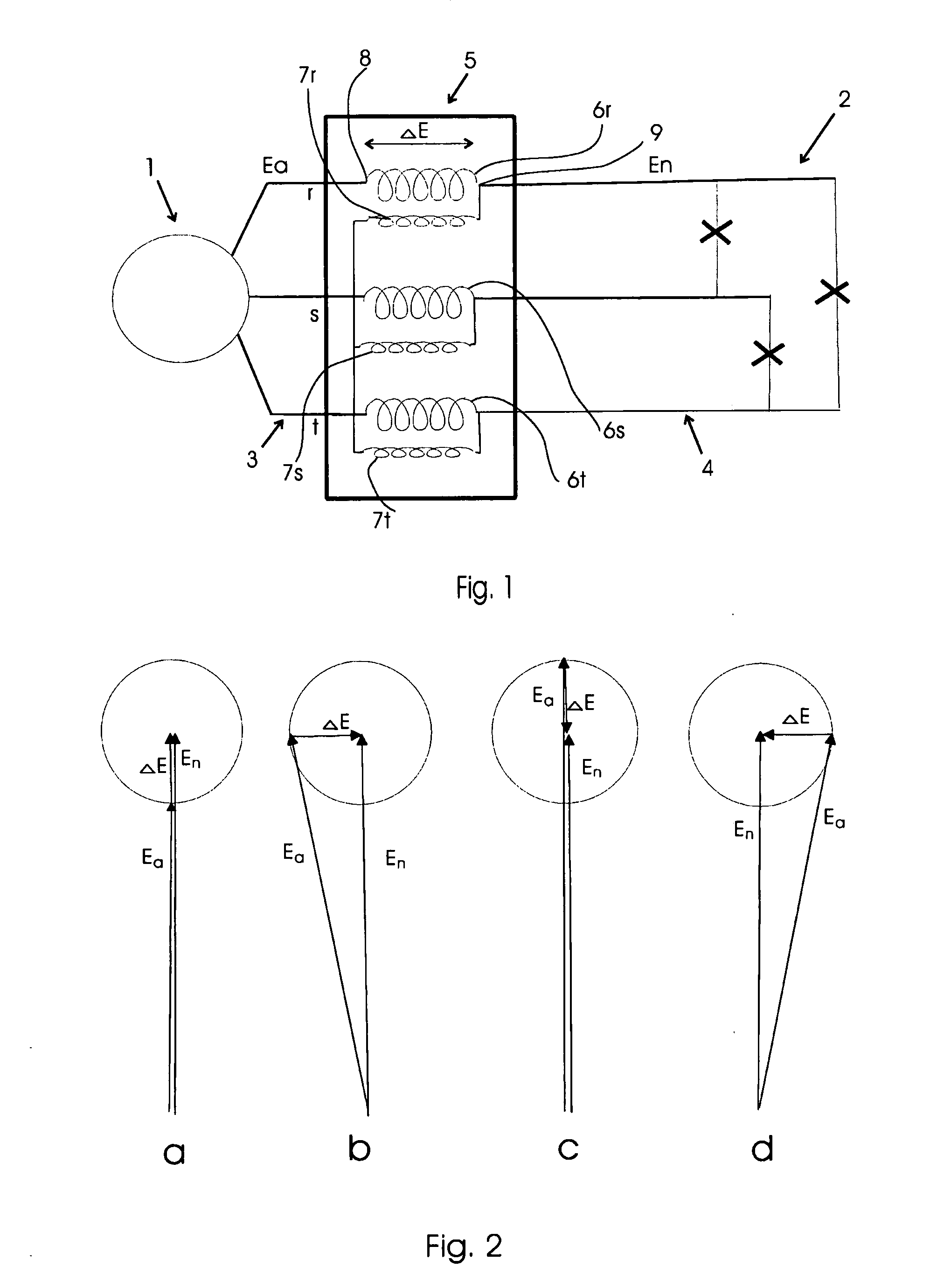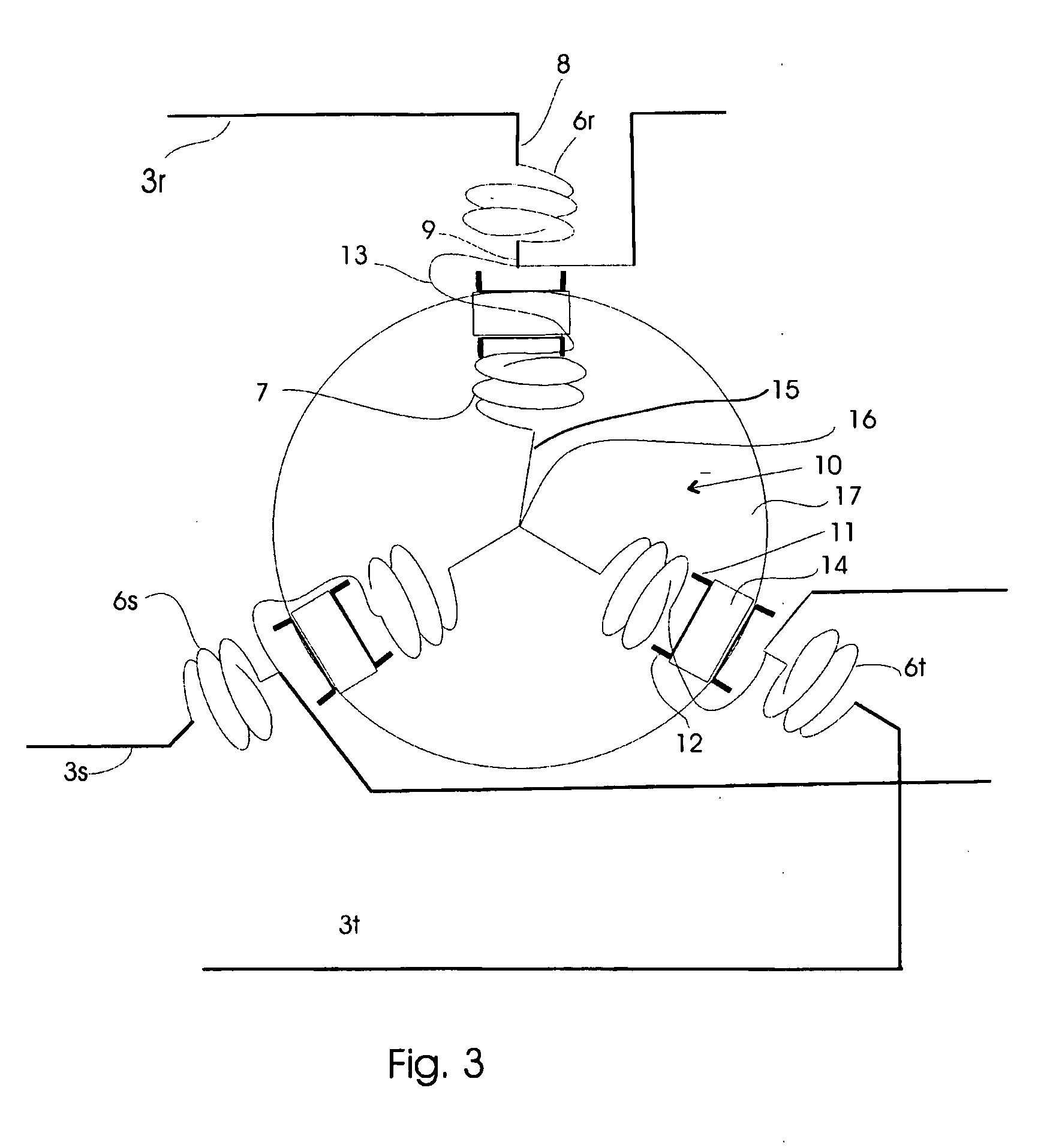Induction Regulator for Power Flow Control in an AC Transmission Network
a technology of induction regulator and power flow control, which is applied in the direction of electric variable regulation, process and machine control, instruments, etc., can solve the problems of not being able to force current, reactance can only be reduced to a certain level, and generators be planned in a non-optimal way
- Summary
- Abstract
- Description
- Claims
- Application Information
AI Technical Summary
Benefits of technology
Problems solved by technology
Method used
Image
Examples
Embodiment Construction
[0049]In the description and the figures below, the invention is by way of example only exemplified for control of a three-phase network with the phases r, s, t, since three-phase distribution networks are the most commonly used in practice, whereas the embodiments of the invention as such is applicable also to a polyphase network with a different number of phases.
[0050]In FIG. 1, 1 denotes a source of current that is connected to a consumer 2 via a three-phase network with its three phases 3r, 3s and 3t, said network exhibiting a primary side 3 and a secondary side 4. An induction regulator 5 is connected between the current source and the consumer. Between the current source 1 and the induction regulator 5, the phase voltage Ea in the network is variable, whereas the phase voltage En in the network between the induction regulator and the consumer is maintained constant. The induction regulator exhibits three stator windings 6r, 6s and 6t and three rotor windings 7r, 7s and 7t. The...
PUM
 Login to View More
Login to View More Abstract
Description
Claims
Application Information
 Login to View More
Login to View More - R&D
- Intellectual Property
- Life Sciences
- Materials
- Tech Scout
- Unparalleled Data Quality
- Higher Quality Content
- 60% Fewer Hallucinations
Browse by: Latest US Patents, China's latest patents, Technical Efficacy Thesaurus, Application Domain, Technology Topic, Popular Technical Reports.
© 2025 PatSnap. All rights reserved.Legal|Privacy policy|Modern Slavery Act Transparency Statement|Sitemap|About US| Contact US: help@patsnap.com



